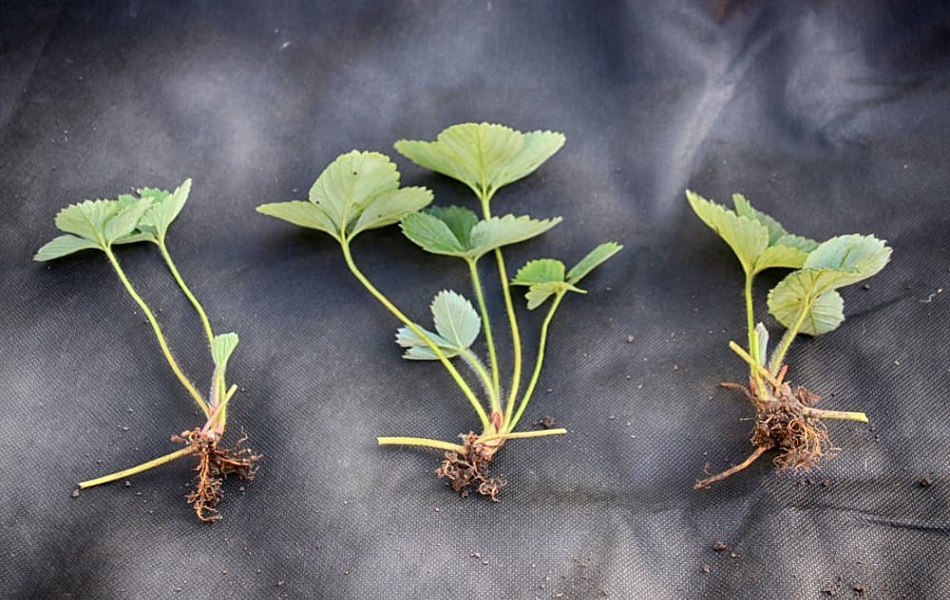It’s like having your senses blown, but in the best way possible. You keep looking until you find the ideal berry—bright red and sparkling like a gem. You know you’ve chosen a perfect strawberry when you hear that delightful snap as you peel it from the plant.
The small sun-warmed berry in your hand gives off a pleasant aroma even before you’ve eaten it. Finally, you take the red prize and pop it in your mouth, biting down and enjoying the sweet berry juices.
Nothing beats a juicy June strawberry, except maybe a whole bunch of them. If you follow these tips, you should be able to enjoy strawberry shortcake and make strawberry jam this summer.
Mulch Your Beds
Strawberries are unique among berries in that they do not require a support system like canes or bushes to thrive. And as we all know, the soil is home to millions of microbes, many of which are not exactly kind to your nascent berry plants.
Mulch your beds well to shield your plants from pests and decay and to improve the quality of your berries.
The name alone suggests a wonderful option: straw.
Although they flourish on any type of soil, strawberries prefer sandy, well-drained soil. By applying mulch over the surface, you can prevent the roots from drying out.
Mulching your berries is an excellent method of disease prevention, as it helps to retain the moisture that your berries need, and it also helps to keep the weeds and dirt off of your strawberries as they grow.
When berries aren’t protected by a layer of mulch, every raindrop spills a little bit of dirt on them. (And whatever microscopic critters may be lurking in there, too.)
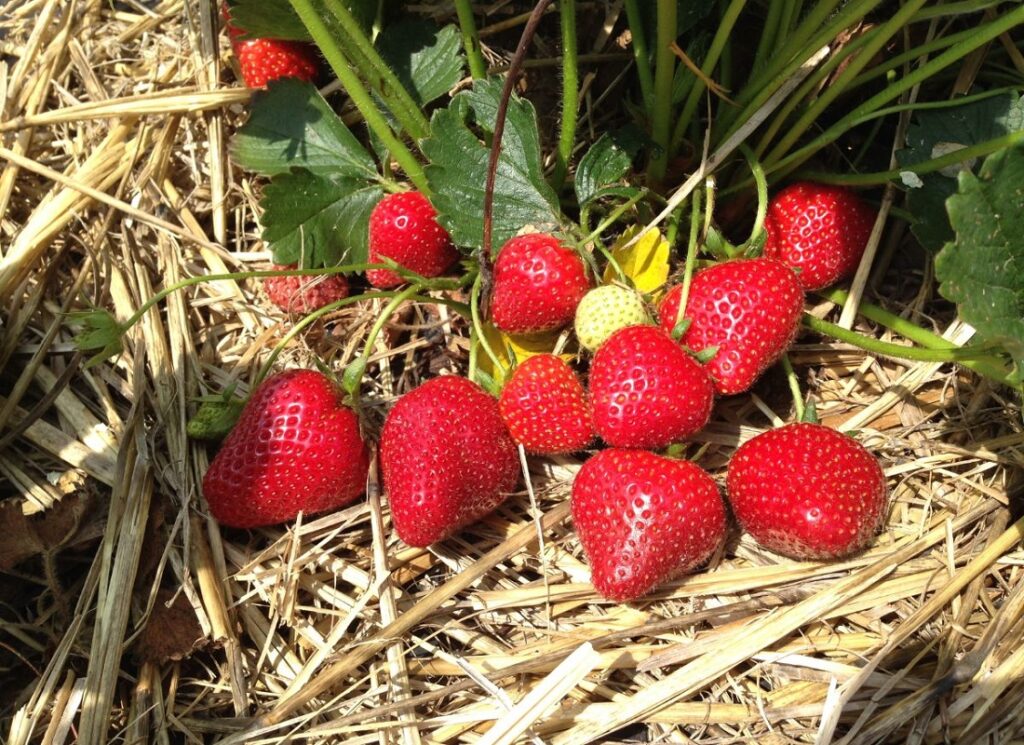
Never Water the Crown
Strawberries benefit from being watered by a soaker hose from a distance of a few inches from the plant’s crown.
You shouldn’t water your berries from above if you don’t have a soaker hose. You will be inviting fungi and other diseases that thrive in damp environments to take hold of the plant’s crown and leaves.
Strawberry plants should be watered directly on the ground, near the plant’s base, even if this means using a bucket and a cup. You want the soil at the roots to be damp but the tops and leaves to be dry.
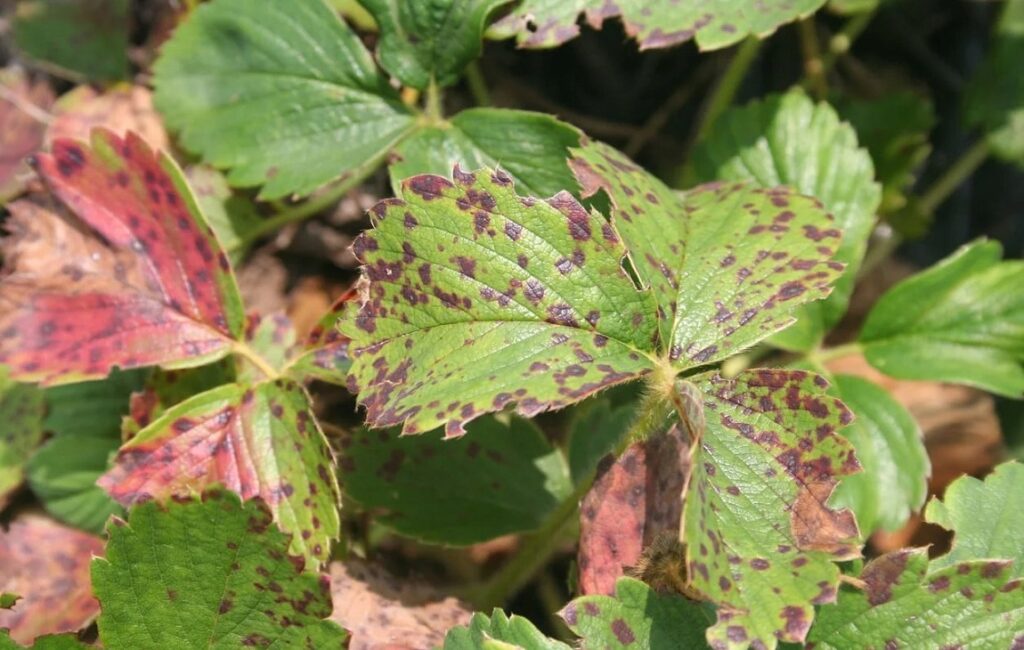
Make Your Bed
Or rather, prepare a strawberry bed for yourself. We’ve established that strawberries’ low growing habit makes them vulnerable to pests and pathogens. A neat strawberry bed is essential for a bountiful harvest. Daily weeding is essential; mulching might also help.
Spotted or diseased leaves should be removed from plants as soon as possible. Slugs and other pests should be removed manually.
During the growth season, it’s a good idea to check on your strawberry bed at least once each day. If you stay on top of things, you can catch issues before they become catastrophic.
Growing strawberries in containers off the ground, such as a hanging basket, will provide them a significant advantage.
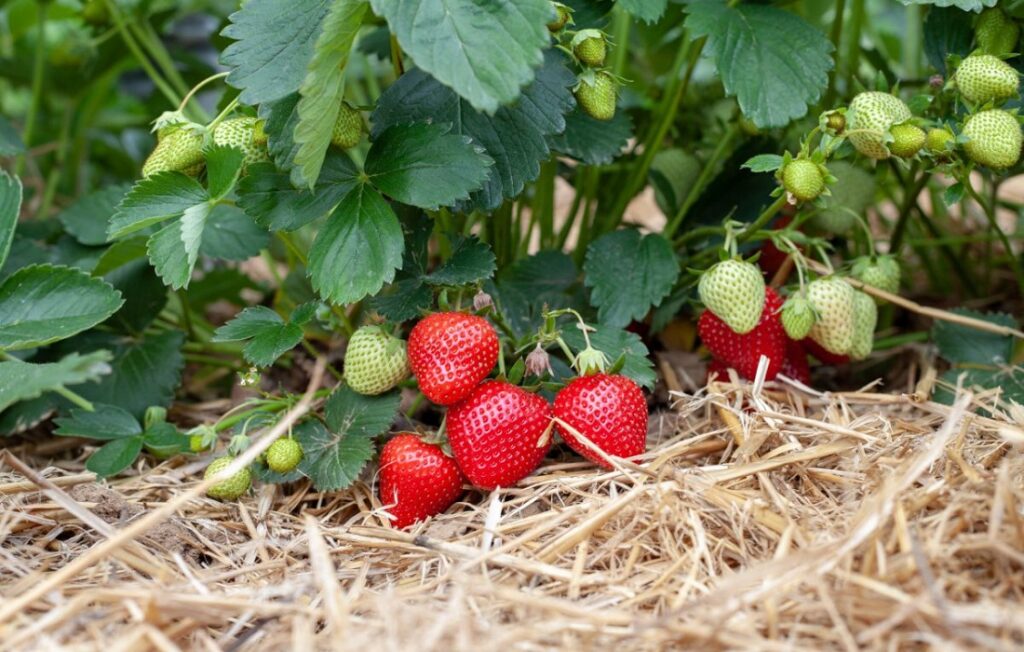
Nitrogen, Nitrogen, Nitrogen
Strawberries require large amounts of nitrogen, but only if it is applied at the right times. You’ll get lush strawberry plants with lots of runners and foliage but no berries if you add nitrogen too early.
Strawberries benefit from a nitrogen-rich fertilizer applied twice a year, in the spring and fall. They will require this extra push at the start of the growing season.
Once you notice berries forming, you can reduce fertilization because the plant won’t need as much nitrogen and will instead use it to grow more leaves.
Some excellent organic sources of nitrogen for the soil include blood meal, fish emulsion, animal manure, and compost. If you use direct manure, though, you risk damaging the strawberry plants’ delicate roots. Instead, compost the manure or brew a compost tea. Applying fertilizer after morning watering helps avoid burning the plant’s roots.
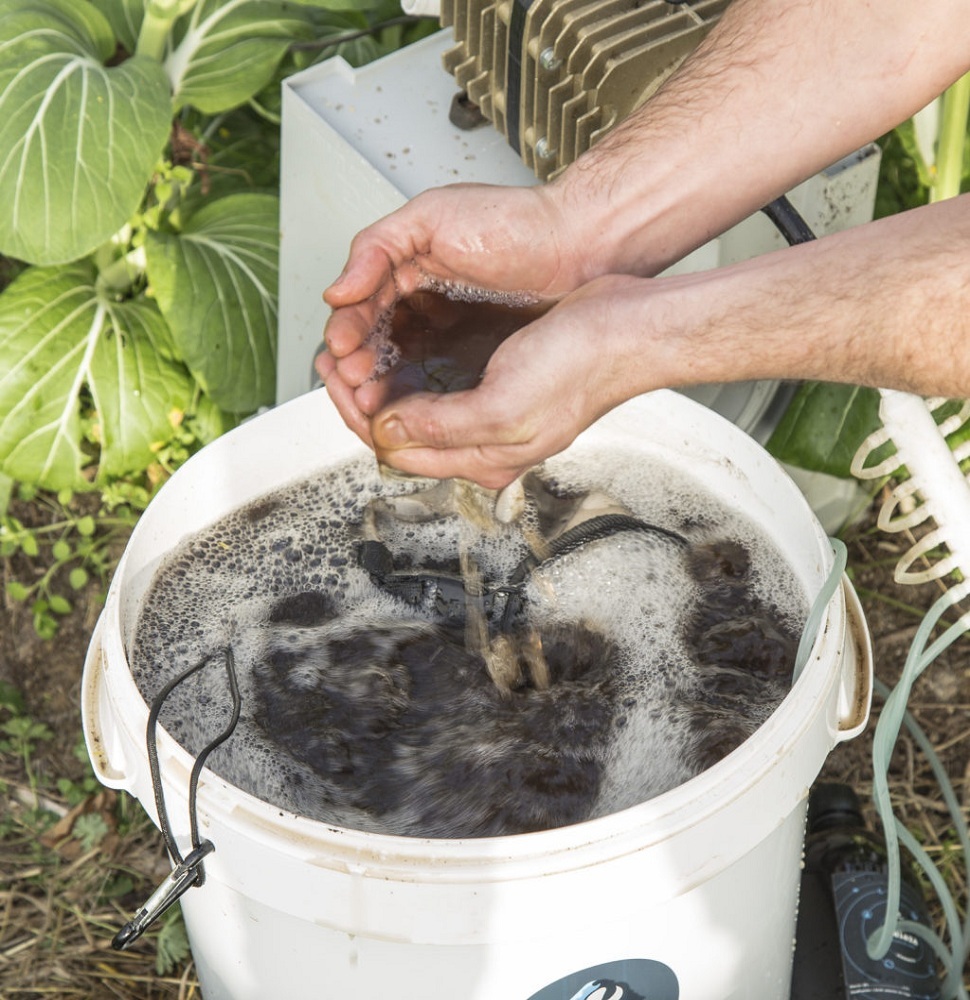
Nip It in the Bud
If you already have strawberry plants established, you can help them out by pinching off runners as they grow.
Plants are always trying to reproduce so they can carry on living. Strawberries accomplish this by sending runners out from the main plant. These runners prevent the plant from using nitrogen and energy for fruit production.
Again, it’s important to keep an eye on your strawberries every day during the growing season so you can pinch or cut off the runners as soon as you see them.
But if you want more plants, let a few of these runners grow into full-fledged plants. Although, We wouldn’t recommend growing more than three on per plant.
The runner will start to grow a secondary plant; once that secondary plant has established itself and is growing on its own in the soil, you can cut the runner between the parent and the new plant. Remove any spreading roots or runners that appear on the secondary plant.
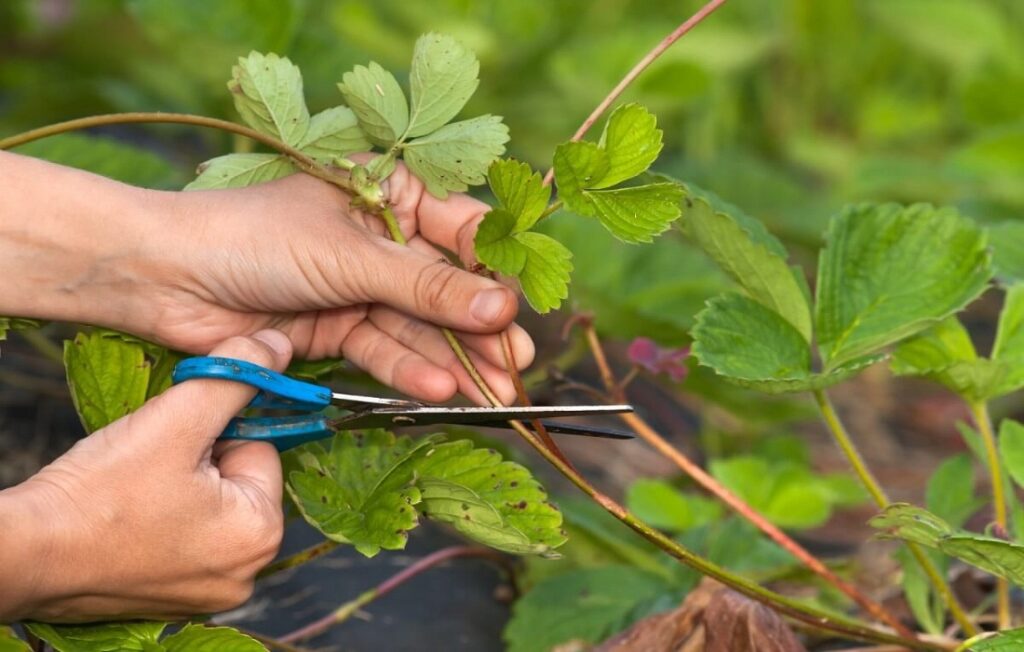
A Berry
Once the strawberry season is over, give your plants a hard trim to get them ready for next year. Using a lawnmower for this purpose is perfectly OK if you are growing your plants in the ground. If not, cut them down to a height of 2 to 4 inches from the ground. Make sure to compost the trimmings or throw away any that are sick.
It’s best to prune your strawberry plants in late summer, right before they settle down for the winter, when they’ll benefit most from another nitrogen fertilization.
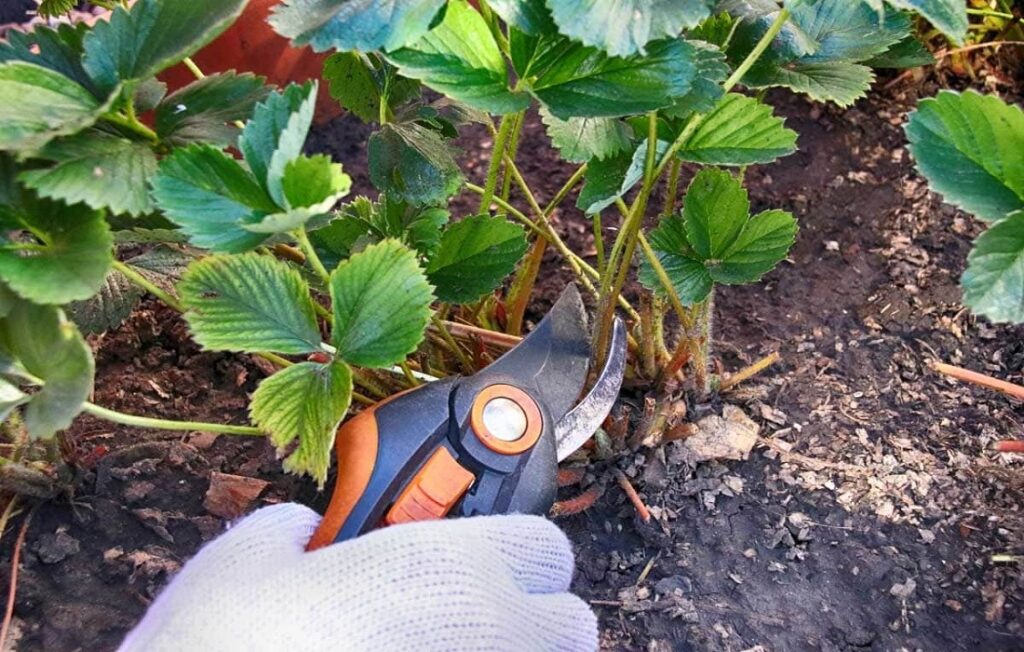
Replace Your Strawberry Beds
As strawberry plants age, they will produce less berries. Every four years, you should replace your strawberry plants to ensure a continuous bumper crop.
Runners from a small number of plants can be used to readily create new plants, as We mentioned above.
So you don’t have to deal with a full batch of new plants at once, stagger their removal. With an established strawberry bed, you may begin replacing around a third of your plants in the second year and continue doing so in the following year.
